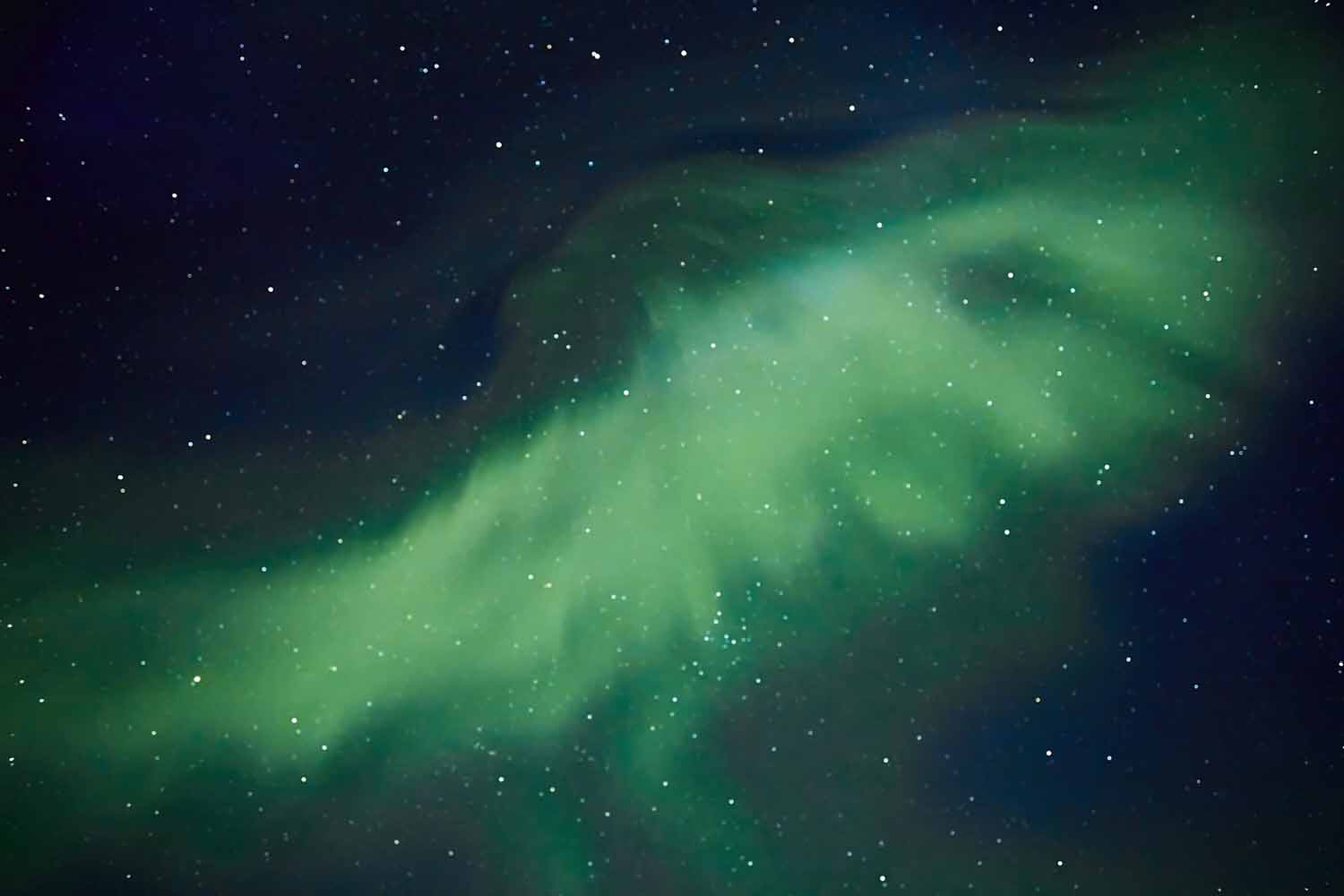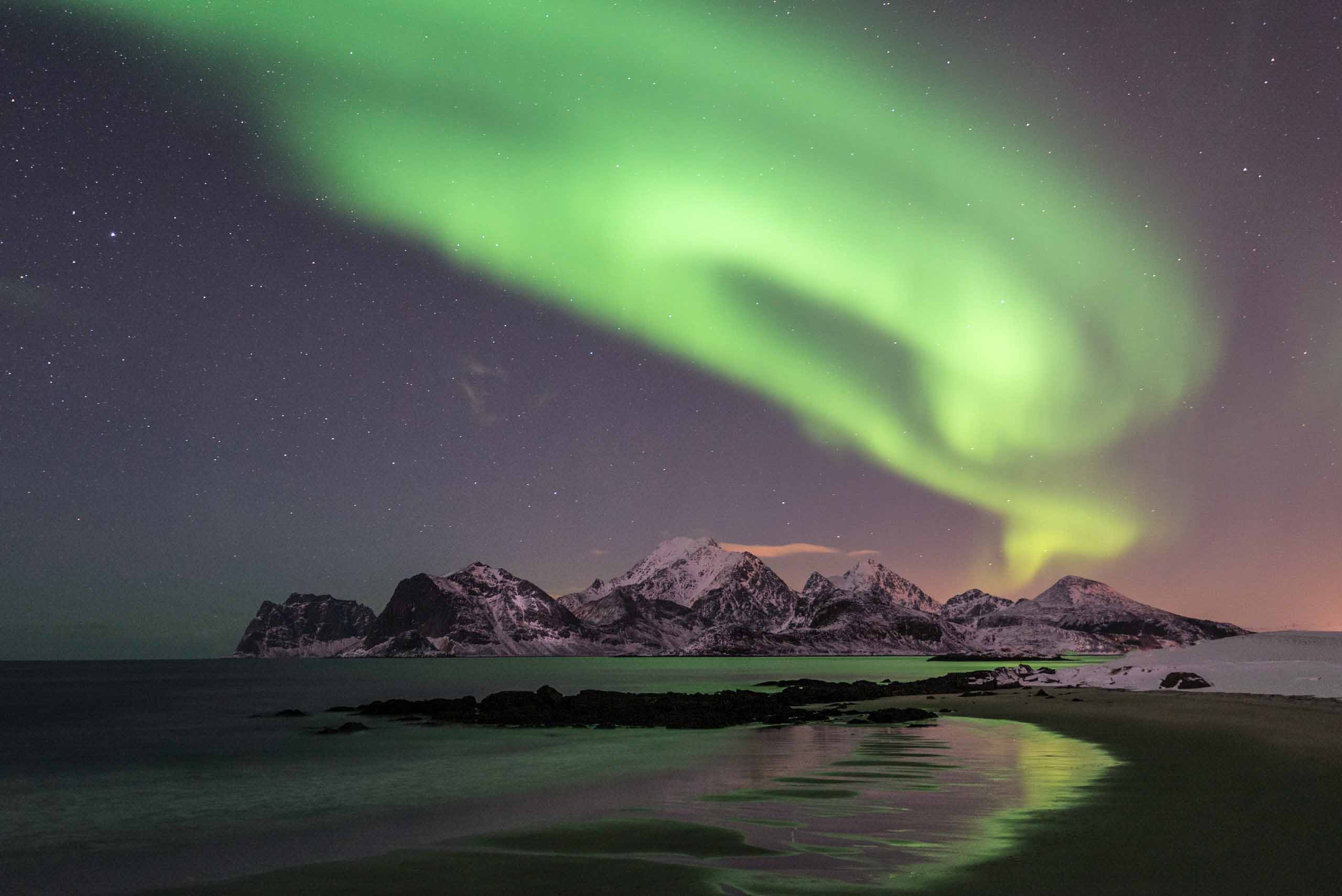Space weather might be a lesser-known forecast from the Met Office, but predicting the occurrence of solar flares, solar radiation storms and coronal mass ejections is vital for range of critical sectors from satellite providers to the aviation industry, as well as for forecasting Aurora Borealis sightings.
In recent weeks aurora sightings have been in the news again, with some as far south as Cardiff reportedly capturing photos of the Northern Lights, which is often the way most of the public is inadvertently aware of space weather.

Image: Grahame Soden, Royal Photographic Society
Has there been more Aurora Borealis activity recently?
In short, yes. But the explanation is well known in the science community and a further increase in space weather activity is expected in the coming years.
Krista Hammond is a Manager at the Met Office Space Weather Operations Centre (MOSWOC). She said: “Activity on the sun, and in particular the number of visible sunspots, varies over roughly an 11-year period, known as the solar cycle.”
The last solar minimum – when the Sun had the lowest frequency of visible sunspots in the solar cycle – occurred in December 2019. This means that the sun’s activity is currently increasing, with the next solar maximum expected around 2025.
Krista added: “Over the coming years, as we continue towards the solar maximum, we can expect to see an increase in the frequency of space weather events, with more chances to see the Aurora Borealis over the UK.”
Finding space to forecast
MOSWOC is one of a handful of 24/7 space weather forecasting centres in the world, with expert forecasters focused on predicting the arrival of impactful space weather events on Earth.
Despite the somewhat predictable nature of the 11-year solar cycle, forecasting specific space weather events can be more challenging, as you might expect when predicting an event on Earth that begins on the Sun around 150 million kilometres away.
Solar flares are sudden releases of energy across the entire electromagnetic spectrum. They are hard to predict, and the energy can be detected in Earth’s atmosphere as soon as 8.5 minutes after the occurrence of a solar flare.
Linked with large flares, solar radiation storms may also occur. These consist of high-energy charged particles, predominantly electrons and protons, and typically take between ten minutes and several hours to arrive at Earth.
Coronal mass ejections (CME) are often associated with flares and are a focus of space weather forecasting. They can take days to reach the Earth and can disturb the Earth’s magnetic field and ionosphere, which is where the Earth’s atmosphere meets space, causing what is known as a geomagnetic storm.
Strong geomagnetic storms have the potential to impact GPS, radio frequencies and some satellite operations but forecasting their arrival can give industries time to mitigate against the worst impacts. They are also the phenomena responsible for the enhanced Aurora Borealis in the Northern Hemisphere or Aurora Australis in the Southern Hemisphere. Find tips on how to take photos of the auroras, courtesy of the Royal Photographic Society.

Image: Richard Ellis, Royal Photographic Society
Last year, the announcement of the Vigil mission highlighted an opportunity to enhance space weather forecasting across the world.
Does space weather link with our weather?
Space weather doesn’t interact with the Earth’s meteorological drivers and doesn’t impact day-to-day forecasting, short of people being more interested in clear skies to see the Northern Lights.
Over a longer period, the impact the solar cycle on global temperatures is negligible and can be responsible for less than 0.05°C differences in global temperature over the course of the 11-year solar cycle. For comparison, global average temperatures have risen by around 1.1°C since the industrial revolution, driven by human-induced climate change.


